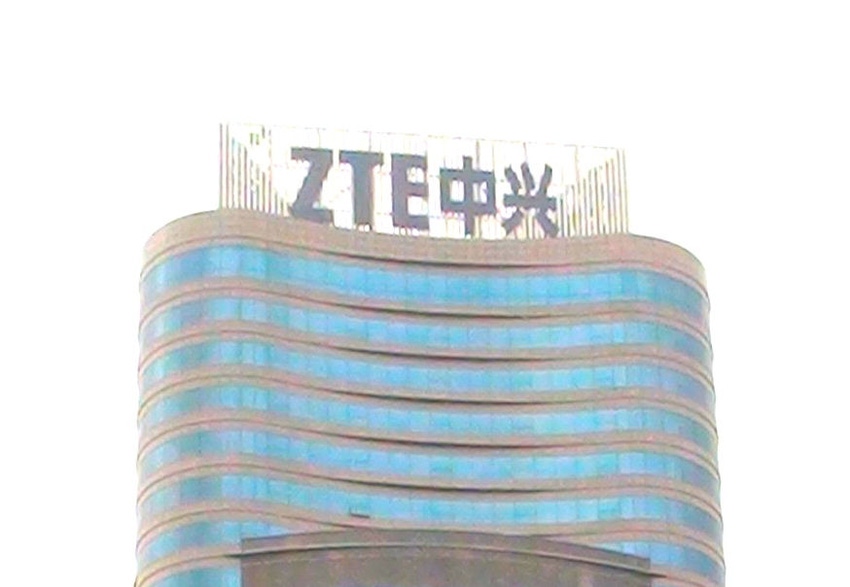ZTE employs 75,000 people and sold $17 billion of gear last year, but seems to have been wiped out with one stroke of a US regulatory pen. That’s scary.
May 11, 2018

ZTE employs 75,000 people and sold $17 billion of gear last year, but seems to have been wiped out with one stroke of a US regulatory pen. That’s scary.
We were among the apparent majority of the telecoms industry that perhaps didn’t fully acknowledge the implications of the US slapping an export ban on ZTE. Of course it was bad, and who could help but be moved by ZTE’s existential angst and pleas for mercy, but these things usually sort themselves out in the end don’t they?
Not this time, apparently. Earlier this week ZTE took the extraordinary step of announcing it had ceased is major operating activities thanks to not being able to score any US components, upon which both its networking and smartphone businesses are heavily dependent. This is an incredibly dramatic development for such a large and established company and it has sent shockwaves through the industry.
To get a more of a sense of the implications we spoke to CEO of telecoms consultancy Northstream, Bengt Nordstrom. “This week’s news confirmed what many people already suspected, that if the ban isn’t lifted then it’s game over,” he said. “The most likely scenario for me is still that the ban will be modified after negotiations, but ZTE is still very vulnerable.”
This seems hard to argue with. All ZTE commercial partners are currently frenziedly reviewing their options and looking for alternative suppliers. All operators we have spoken to have been quick to either stress they don’t use ZTE kit or have more than one supplier.
“ZTE is just one of a number of suppliers that Orange works with, including Huawei, Ericsson, Nokia and Cisco, amongst others,” an Orange spokesperson told us. “Today, Orange uses ZTE equipment mainly in its service platforms in Africa and for our FTTH deployment in Spain. We are in the process of assessing the US ban decision with regards to ZTE. The Group has always maintained a strategy of partnering with a number of providers so that we have alternative suppliers at all times. We do not envisage any impact on equipment parts currently.”
Nordstrom thinks one of the effects this will have on the broader telecoms industry is that any operators who only use a single supplier, regardless of who it is, will give that strategy some pretty urgent review. “All operators need to consider at least a dual vendor strategy,” he said.
The elephant in the room here, at least as far as we’re concerned, is Huawei. The Chinese giant is not currently subject to anything like the punitive measure ZTE is, although the US continues to ban it as a public sector supplier there and it’s severelycurtailed in the US devices market too. Furthermore the US has reportedly started looking into the same kind of sanction-flouting activity that eventually landed ZTE in its current predicament.
We’re not aware of any evidence that Huawei has done anything that could draw the ire of US agencies, but we have to wonder whether the broader industry might be a bit spooked by what has happened to ZTE and whether Huawei might get swept up in the escalating trade aggro between the US and China. At the very least if some operators that are wholly dependent on Huawei decide to hedge their bets with another kit vendor that would surely be a negative for Huawei.
Even if ZTE somehow wins an appeal against this ban, or if US/China horse-trading results in a significant downgrade of the measures, the damage appears to have been done. Commercial partners currently looking for alternative aren’t going to suddenly stop and who would want to take the risk of things suddenly changing for the worse once more anyway?
The US government under President Trump (who, let’s not forget, placed the economic threat posed by China at the forefront of his election campaign) has demonstrated that it’s willing to wreck even the largest companies if it’s not happy with them. If it can happen to ZTE then, surely, it could happen to any company. That must be an unsettling thought for anyone in the telecoms industry contemplating major deals right now.
About the Author(s)
You May Also Like







.png?width=300&auto=webp&quality=80&disable=upscale)

.png?width=300&auto=webp&quality=80&disable=upscale)
_1.jpg?width=300&auto=webp&quality=80&disable=upscale)



.png?width=800&auto=webp&quality=80&disable=upscale)